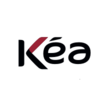Detailed content of our market study
 Inforamtion
Inforamtion
- Number of pages : 35 pages
- Format : Digital and PDF versions
- Last update :
 Summary and extracts
Summary and extracts
1 Market Overview
1.1 Definition and scope of the study
Coworking is a work style that involves sharing a work environment, usually an office, while maintaining an independent business. Unlike the typical office environment, coworkers are not usually employed in the same organization
The first Italian coworking spaces were opened just over a decade ago, following the example of the United States, which opened its first coworking spaces in 2005. Today, there are about more than 800 coworking spaces in Italy, well distributed in major Italian cities. They are most present in northern Italy, with 472 coworking spaces, especially in Lombardy, with Milan having 121 spaces. In 2020, 50 more coworking spaces were opened in Italy despite the crisis period.
These places welcome not only freelancers, but also start-ups, entire sectors of a company or work groups. In addition, it is possible to "rent" a meeting room for the morning or just for an hour, without having to think about tidying it up or cleaning it. With the pandemic, the concept of work is being rethought. Employees are getting used to working in places other than the traditional office. Companies are encouraging this evolution with the spread of telecommuting, and coworking is a promising trend for the future.
Regarding the profitability of the sector, based on data from the Italian Coworking Survey 2021, it is estimated that there will be a decrease in the number of profitable companies, from 41 percent to 21 percent in 2020-21 compared to 2018-19, to be considered the period of crisis related to the latter two years. In general, the sector currently appears to be in an expansion phase.
1.2 The global market
The growing number of startups is boosting the growth of the coworking market, as, due to the rising cost of private office rents, businesses of this type and others are increasingly opting for shared workspaces.
According to some forecasts, about * million people will be using coworking spaces by ****.
Number of users of coworking spaces World, ****-****, millions flexas.com
The coworking market appears to be expanding in the global context. Based on forecast analysis, trends, and future technological advances, it will continue to grow, peaking by ****.(***)
According to authoritative industry views, such as that of Industrios CEO, the coworking market is going through a sustained growth phase. In fact, many small businesses are starting to suffer from the isolation of working from home, while many large companies are moving away from large-area spaces and looking for more flexible solutions in terms of size. (***)
According to projections, there will be about **,*** coworking spaces worldwide by the end of **** , with a CAGR of about **.* percent.
Number of coworking spaces World, ****-****, in numbers statista.com
According to Challenge, by **** the coworking market will affect * to ** percent of workers in developed economies, with China (***) showing particularly strong growth. In European countries, growth is estimated ...
1.3 The Italian market
Today, coworking spaces are seen as viable alternatives to traditional offices in Italy. However, this was not always the case as, in ****, there were only ** registered coworking spaces in this country.
In fact, this market has been characterized by impressive growth: the number of open coworking spaces has increased by more than ****% in just ** years.
Despite the pandemic, the numbers have increased, albeit at a slower pace. In fact, about ** locations are noted to have opened in ****. (***)
So, even in Italy, we are witnessing an expanding phenomenon, which will remain so in ****. A survey of collaborative spaces identified about *,*** coworking locations in the country as of May ****. (***)
It is worth noting that the data mentioned are estimates, with considerable margins of error, due to different conceptions and identifications of spaces defined as coworking.
Evolution of the number of coworking spaces Italy, ****-****, in units Source: ****
In Italy, at present, about ** percent of coworking spaces belong to coworking groups that offer a wide network of contacts and facilities, generally oriented to specific purposes, based on brands, but above all on relational, human and work models[***].
1.4 Covid Impact
Flexible offices, temporary offices, coliving and coworking, what we call Shared Workspaces, like so many businesses across the country have been heavily affected by the restrictions imposed to deal with the pandemic. At the beginning of the **** health emergency, the sector was in a strong phase of expansion after years of continuous growth, particularly since ****.
At the beginning of ****, as mentioned, there were, in fact, about ** shared work spaces throughout Italy, almost all of them concentrated in large cities in the center-north.However, since ****, the model has become more established, so much so that, at the end of ****, there were about *** registered coworking spaces in Italy, *** in **** and more than *** in ****.
Some of the most significant challenges coworking spaces are facing today, due to the COVID-** health crisis, are closed periods, limited access, being deprived of revenue from in-person events and classes, and challenging coworkers' general uncertainty and fear of sharing a space with other people.
The Italian Coworking Survey **** (***) was conducted to collect data on the situation of coworking and other shared work spaces during this first phase of the emergency following the spread of the pandemic. The main findings of the survey included:
The closure rate of spaces
Rate ...
2 Demand analysis
2.1 Demand in Italy
In Italy coworking arrived a few years later than in other European states and has also developed more slowly, but maintaining a certain constancy.
From the composition of demand, it can be understood which categories of workers/businesses and with which characteristics opt for coworking solutions.
Types of workers/businesses using coworking spaces Italy, ****, % italiancoworking.it
Demand for flexible spaces has increased in ****, and requests for more than *,*** locations have been registered on the italiancoworking.it portal. The graph shows the percentage breakdown of requests based on the solutions offered. The largest percentage concerns daily workstations (***), this confirms the need to find an intermediate way between office and home for remote workers.
In addition, the platform also recorded a sharp increase in views of the various spaces offered (***).
Demand for flexible spaces Italy, ****, % italiancoworking.it
Focus on the Lombardy region
Regarding the Day Pass service (***) provided by the italiancoworking.it platform, there has been an increase in bookings; more than *** Day Passes were purchased in October ****.
In particular, demand for this service is mainly concentrated in Lombardy, with Milan confirming itself as a reference point for new trends in the labor market.
In addition, interested developments have also been noted in ...
2.2 Demand drivers
The main drivers of demand for coworking spaces in Italy are and have been in the past[***]:
Increase in the amount of professionals and freelancers;
Considering the fact that the number of freelancers and professionals in Italy is an important determinant of the demand for coworking spaces, data on new VAT openings by production sector are reported, comparing **** with the second quarter of ****, which recorded ***,*** openings, a decrease of *.* percent from last year.
Breakdown of new VAT openings, by type of activity Italy, first quarter of ****, in % Source: ****
More in detail, coworking spaces are particularly suitable for freelance and remote workers categories, but also for small businesses or startups for the following reasons:
Economic benefits-Working in a coworking space saves considerably on the cost of renting a facility. For a micro business of * people, an average savings of **% compared to a traditional office is estimated in the case of renting * workstations. In addition, there are also economic savings in terms of operating costs, overtime costs and additional services that are borne by the coworking space manager.(***) Greater flexibility-in terms of time and space, coworking allows you to organize your time according to your needs. In addition, it is also convenient in ...
2.3 The geographical distribution of demand
Most coworking spaces operate in Northern Italy (***), particularly in the North West. Compared to ****, +** spaces were opened, but the growth is significant only in Lombardy: in fact, the market has established itself in this area and shows great vitality.
The region is undoubtedly the most dynamic in Italy, not only because more than ¼ of Italian coworking spaces are concentrated here, but also because here there is the highest supply of spaces per inhabitant (***). In the rest of the Northwest, with the exception of the regional capitals, growth, while positive, is low in both absolute and relative terms.
In the Northeast, the regions with the highest density are Veneto, where coworking has been growing for a couple of years, and Emilia Romagna (***). Veneto, in particular, is the second region with more shared coworking spaces in Italy, equally distributed among all provinces and very present even in small towns.
In contrast, in the other regions of Northern Italy, coworking spaces are mainly present in provincial capitals and with a density around the national average.
As for the Center and the South, despite the growing number of facilities there has been a slowdown mainly due to the nature of investments made and planned. In ...
2.4 New trends in demand
Demand for coworking offices in the suburbs
An important factor that is increasingly being considered by workers is the distance between home and workplace. Despite the upswing in urban centers, the demand for coworking offices in the suburbs is growing. This phenomenon is due to the inconvenience created by long commutes combined with the reduced need to travel to the office every day, as most of those who frequent these spaces are remote/online workers. A survey conducted by Industrious showed that ** percent of respondents would be willing to travel to the office more often if the commute was less than half an hour. (***)
Proximity of coworking offices to public transportation stops
Despite the trend mentioned regarding suburbs, it is evident that coworking is a reality purely related to metropolitan-type urban centers. Therefore, the importance of the proximity of the location to bus, metro or streetcar stops cannot be overlooked. In addition, companies that manage coworking spaces can also take advantage of agreements with bike-sharing or electric scooter services to make it easier to reach locations.(***)
3 Market structure
3.1 Market structure
The analysis of the size of the market related to coworking offices is carried out on the basis of data belonging to the category related to ATECO code **.**, which includes integrated support services for office functions (***). Specifically, * magnitudes are considered: number of active enterprises, number of employees and legal form of enterprises.
Looking at the number of enterprises in the sector over the past * years, it is possible to see a decline in ****; however, thereafter the trend becomes positive again, with a **% increase in **** compared to ****. The reported data support what was said earlier: despite the period of crisis related to the covid-** pandemic there were still new openings confirming an expanding reality.
Number of enterprises ATECO code **** Italy, ****-****, in number istat.it
In ****, the types of enterprises operating in the sector have as their prevailing legal form theindividual entrepreneur/freelancer/self-employed person. This figure confirms a type of activity that is still at the stage of development, so mainly small businesses are devoted to it. However, confirming an increasingly developing phenomenon, the second most prevalent type of legal form is the limited liability company.
Legal form enterprises ATECO code **** Italy, ****, % istat.it
Looking at the number of employees in ...
3.2 Value chain
The value chain of the coworking market is exemplified below.
3.3 Distribution
The preferred sales channel for coworking spaces consists of online sales.
The digitization of sales has inevitably accelerated with the advent of the pandemic, which has necessitated the use of non-physical channels. Regardless of the exogenous event, online sales is a natural evolution of distribution channels, especially in the case of coworking offices where mostly remote workers are concentrated.
In addition, the mode of shared workspaces is not a well-known phenomenon in Italy, so there is a need for adequate promotion of their spaces so that they can be considered by the public. In fact, many operators rely on third-party companies that can optimize online visibility and space management, such as, for example, Booking Ninja.
The most popular model involves operators that manage a large network of independent coworking offices and, in addition,offer consulting services related to the opening and management of new shared work spaces. Examples include Cowo, Regus, Staybusinesscentre.
(***)
(***)
(***)
3.4 Main actors in the market
The coworking market is driven by coworking networks, which focus on creating a dynamic and innovative workplace for different types of consumers. The main players in Italy by turnover are:
Regus Business Centre Italia s.r.l: has been helping companies find and create the perfect coworking space for their employees for more than thirty years. Thanks to a global network of work pati it has created a global community of *.* million people.
Copernico s.r.l: offers office and shared space for small and medium-sized businesses operating in a variety of sectors: from communications to digital crafts. One of Copernico's competitive advantages is the number of multipurpose spaces made available to companies: meeting rooms, event rooms and a very large restaurant and bar with an outdoor garden: an ideal place to organize meetings and develop collaborations in an informal environment.
Wework Italy s.r.l: deals with shared workspace services. Founded in ****, it offers flexible shared workspaces worldwide for businesses of all sizes, self-employed professionals and freelancers.
Talent Garden Italia s.r.l: founded in ****, is a network of coworking and innovation spaces distributed in various European countries, with the aim of promoting collaboration, innovation and business growth. The coworking ...
3.5 The market leader: the International Workplace Group
International Workplace Group is a leader in Italy and worldwide in the flexible workspace sector. Present in the country with the Regus, Spaces and Signature brands, it has now announced the addition of Copernico to its portfolio, bringing the number of its centers in Italy to **, for a total of more than ***,*** square meters.
This addition has helped affirm the Group's leading role in Italy: in fact, Copernico has ** coworking and flexible office spaces distributed in Milan, Bologna, Turin, Cagliari, Varese and Trieste. This has allowed IWG to increase by ** percent the area of flexible workspaces managed, confirming it as the first operator in the Italian market and a leader in the sector.
Mauro Mordini, country manager Italy of IWG was interviewed by Internews: "The operation is part of the path of increasingly widespread expansion of our network; a path accelerated, in Italy and worldwide, by the effects of the pandemic, which has contributed to the emergence of hybrid forms of work. Alongside head offices, companies are increasingly inclined to invest in offices distributed throughout the territory, to enable their employees to reduce travel and work from appropriate locations, obviating the limitations of working from home. Companies benefit in terms of ...
4 Supply analysis
4.1 Overview of the offer
Coworking facilities offer a simple and affordable solution. They are aimed at all those professionals or companies that, doing their work in a flexible way, do not have a permanent location or, if large enough, to accommodate more people in case of meetings and conferences. But also to all those up-and-coming professionals who do not have the economic possibility to bear the cost of real rent on their own. In Italy, real estate coworking has found fertile ground, especially in large cities, also facilitated by Law ***/****, implementing innovative startups.
Coworking generally takes place within an open-space structure: a loft with ample space, Wi-Fi connection, multiple workstations equipped with computers, archive, meeting rooms, conference rooms, coffee area. In larger facilities, even dining/canteen rooms. A coworking space is flexible by nature: different spaces, such as a single workstation or an entire meeting room, can be rented for as long as needed. It can range from a few hours to entire months, depending on the coworker's needs.
This creates a space where different realities coexist and where unexpected synergies can arise between companies and professionals who otherwise would not have met.
Here, entrepreneurs and freelancers do not just share physical spaces. But they ...
4.2 Price analysis
Coworking spaces offer a variety of services and facilities, varying in cost and price.One of the most important determinants of price is the location of a coworking space: a coworking space in northern Italy or in a larger city is likely to be more expensive than one in the south.
The table below provides an overview of the main coworking facilities and their average prices in major Italian cities.
As for Veneto, the second largest region in the market, coworking prices are in line with the Italian average, which is about €** for a daily workstation.
In larger, more attractive cities, however, the price goes up slightly. A daily coworking space in Venice costs an average of **.* euros, while in Padua and Verona it goes up to ** euros.
Comparing with major Italian cities, prices in Verona and Padua are:
*% less than the prices in Milan **% more than in Rome **% more than the prices in Florence and Turin
[***]
4.3 Innovation and supply trends
Innovation
Frontier of innovation, Fablab and Coliving are the less traditional shared work spaces. The Fablab (***) is the evolution of the workshop in a digital key. In fact, these spaces offer the use of customized digital fabrication equipment and services, training and collaboration paths. Places for the first prototyping or low-cost experimentation of ideas and solutions, they are often the hub of local Maker communities or nodes of international networks.
Colivings are shared workspaces where you can also stay and actively participate in the local community. In the past, they were the realm of so-called digital nomads: freelancers in the digital industry who, being able to work anywhere, choose colivings to travel and carry out collaborative projects. Today, in big cities, they are becoming a way to join a very specific community and embrace a very specific lifestyle.
New trends
Technology
Technology is increasingly important in this market-it is critical to providing flexibility and access to space at all times. Access cards, coworking space management software, reservation system, attendance system, automated invoices, time trackers, etc. have become so advanced that there is no need for a manager, reducing the costs and time spent in managing a coworking space.
Multiple locations
Clients ...
5 Regulations
5.1 Coworking contract: what services it offers and who can enter into it
With a coworking contract, the grantor provides a furnished work space to a user, who can then enjoy a comfortable and functional environment in which to carry out his or her professional activities.
The coworking contract is atypical, for consideration (***), contains elements of a lease, i.e., rent, and elements of a service contract. It may or may not be in writing, but written form is advisable, to identify exactly the space, services and equipment provided, terms of use, and related costs.
The contract should explicitly state the fee to be paid by the user to the provider of the space and any services and equipment. This can be a monthly amount, to be paid in advance, as in the case of a rental agreement, but also an amount paid on a case-by-case basis, depending on usage.
The parties are free to stipulate any length of contract (***); there may be an earlier expiration than the agreed term, usually with notice. Upon expiration, the contract may be renewed at the discretion of the parties.
Who can enter into a coworking contract
Coworking contracts are mainly for professionals who do not have their own office, often because of the costs involved, especially at ...
5.2 What it takes to open a coworking space in Italy
Coworking spaces must comply with two main rules:
The first concerns the use of the premises, which must be used for office purposes. The second concerns compliance with normal safety regulations (***)
Opening a coworking space requires a simple application to the police headquarters, marked by silent consent (***).
From a bureaucratic point of view, opening a coworking space is equivalent to starting a business. Thus, the regulations for opening a coworking space require more or less the same steps required by law. Once you have chosen the premises or apartment where you want to set up your coworking space, you will need to have a lease or sales contract stating the intended use of the property, i.e. " office ", is clear.
It will then be necessary to:
Open a VAT number; Register with the Business Registry; Submit the Scia (***) to the local municipality. Provide the Single Notice for the birth of the business to the Chamber of Commerce; Register with Inail; Any request for authorization to put up signs.
6 Positioning of actors
6.1 Segmentation
- Cowo
- Impact Hub
- Regus Business Centres Italia S.r.l (IWG)
- WeWork
- Copernico s.r.l
- Talent Garden Italia s.r.l
- IWG Regus (International Workspace group)
All our studies are available online in PDF format
Take a look at an example of our research on another market!
 Choosing this study means :
Choosing this study means :
Access to more than 35 hours of work
Our studies are the result of over 35 hours of research and analysis. Using our studies allows you to devote more time and added value to your projects.
Benefit from 6 years' experience and over 1,500 industry reports already produced
Our expertise enables us to produce comprehensive studies in all sectors, including niche and emerging markets.
Our know-how and methodology enable us to produce reports that offer unique value for money.
Access to several thousand articles and paid-for data
Businesscoot has access to all the paid economic press as well as exclusive databases to carry out its market research (over 30,000 articles and private sources).
To enhance our research, our analysts also use web indicators (semrush, trends, etc.) to identify market trends and company strategies. (Consult our paying sources)
Guaranteed support after your purchase
A team dedicated to after-sales service, to guarantee you a high level of satisfaction. +44 238 097 0676
A digital format designed for our users
Not only do you have access to a PDF, but also to a digital version designed for our customers. This version gives you access to sources, data in Excel format and graphics. The content of the study can therefore be easily retrieved and adapted for your specific needs.
 Our offers :
Our offers :
the coworking market | Italy
- What are the figures on the size and growth of the market?
- What is driving the growth of the market and its evolution?
- What is the positioning of companies in the value chain?
- Data from several dozen databases
5 reports pack (-15%) IT Italy
- 5 reports at €75.6 excluding VAT per study to choose from our Italian catalogue for 12 months
- Save 15% on additional studies purchased
- Choose to be refunded any unused credit at the end of the 12-month period (duration of the pack)
See the terms and conditions of the pack and the refund of unused credit.















